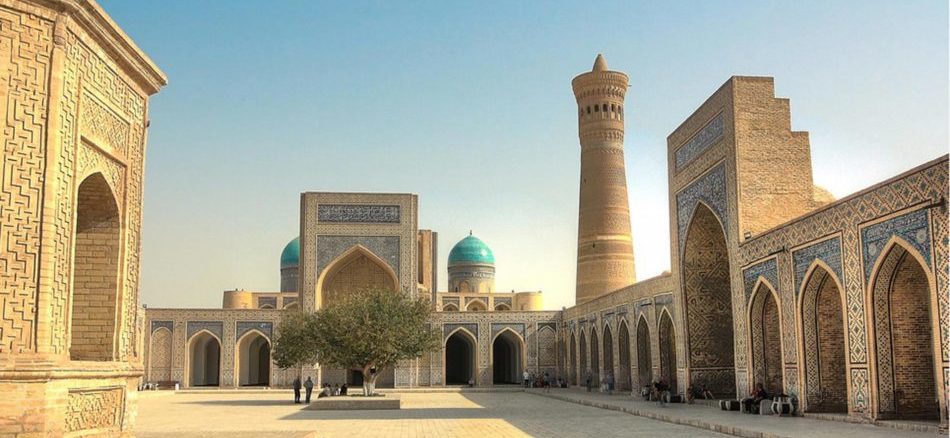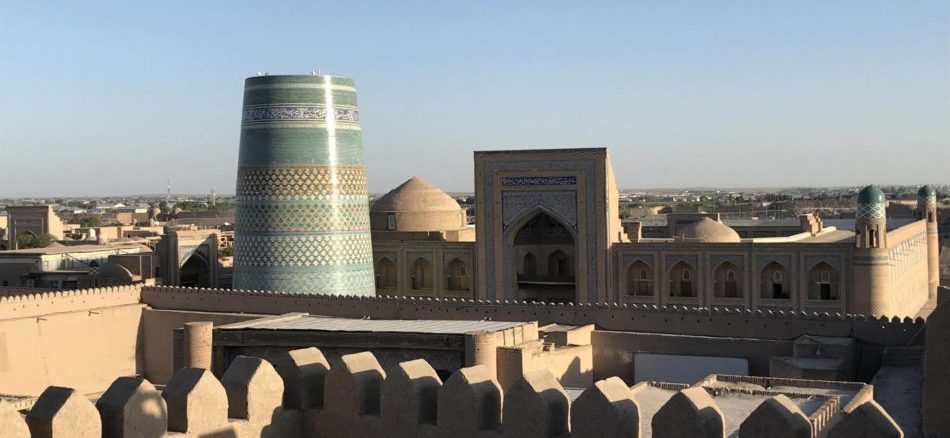
Registan Square, Samarkand is the most important monument in Uzbekistan
Registan Square in Samarkand is one of the outstanding examples of urban development art in Central Asia. The name Registan means “sandy place” or “desert” in Persian. It is framed by three madrasahs (Islamic schools) of distinctive Islamic architecture. The square was regarded as the hub of the Timurid Renaissance. From three sides, the square is surrounded with grand madrassah – Ulugbek, Sher Dor and Tilla Kori. It is thanks to these buildings that have survived on the territory of the city that Samarkand was included in the UNESCO World Heritage List in 2001.
The history of the Registan Square
During the reign of Timur (1370-1405) Registan was the main trading area. And then only during the reign of Ulugbek it acquired an official character. He ordered the construction of the madrassas, caravanserai and other buildings.
Ulughbek madrassah

The Ulughbek madrasah building (1417-1420gg.) has been preserved until today. It is believed that this is a truly classic type of Central Asian madrasah. The word “madrassah” stems from Arabic and literally means “teaching and learning place”.
The author of the project is Kavametdin Sherazi, a court architect of Ulugbek’s father – Shokhrukh. The madrasah area is 81x51m, the yard area is 30x30m. The main facade of the madrasah faces the square. It includes pishtaq, fragments of walls and minarets, which served structural, technical and aesthetic purposes. At that time, it was the largest scientific-educational establishment in Samarkand. Here students were taught philosophy, astronomy, mathematics, theology.
Sher-Dor Madrassah

200 years separate Ulugbek madrasah from Sher-Dor (1619-1636) and Tilya-Kori (1647-1660) madrasahs. The radical restructuring of the Registan ensemble was carried out in the 17th century by order of the Yalangtush Bahadur Biy, the military leader, energetic governor of the Bukhara khans in Samarkand. Being a ruler of the city, he decided to construct another madrassah on the Square of Registan opposite the building erected by Ulughbek.
According to the project of architects, the new madrassah was supposed to be located on the eastern side of the square and be a mirroring reflection of existing building on Registan. However, the exact mirroring concurrence did not work as the architect did not take one peculiarity into consideration – 200 years have passed since the construction of the Ulughbek madrassah, and the building had shrunk into the ground and the level of the square itself had risen to 2 meters. In the result, the new madrassah turned out to be taller. However, it is rather difficult to notice this different visually.
The area of the madrasah is 70×56 meters, the courtyard is 38×38 meters. The composition of the courtyard is traditional: two floors of the cell, four aiwans, two darskhanas. On the entrance portal there is a quote glorifying the creator of the madrasah: «We sing the glory to the Great Warlord Yalangtush Bakhodur Biy! madrasah, which he built delighted the heavens. When the architect laid the last brick of the arch of the entrance portal, Heaven was amazed, confusing this arch with the new moon!»
The facade of the Sher-Dor madrasah is decorated with a zoomorphic ornament – a liger, a lion-tiger, running deer and human-like faces of the Sun. Hence the name of the Sher-Dor Madrasah – «decorated with lions.»
Tilla-Kori Madrassah

Ten years later the Tilya-Kori (meaning “Gilded”) Madrasah was built. It was not only a residential college for students, but also played the role of grand masjid (mosque). This complex was built for 14 years. It completed the architectural composition in the Registan Square.
Samarkand lost its cathedral Friday mosque by the 17th century, then the builders of Tilya-Kori built a complex combining both a mosque and a madrasah. The mosque is located on the western side of the courtyard.
The layout of Tilya-Kori madrasah is not similar to other madrassas. Great work was done on the restoration of this madrasah: specialists strengthened the portal, restored the lining, erected a dome and lined it.
Specialists used the painting «Kundal» (multi-color technique, with gilding, painting on relief ornament) to decorate the Tilya-Kori mosque (the name translates as «decorated with gold»).
There is a minbara, place for sermons, near the mihrab. The yard was also used for Friday prayers.






